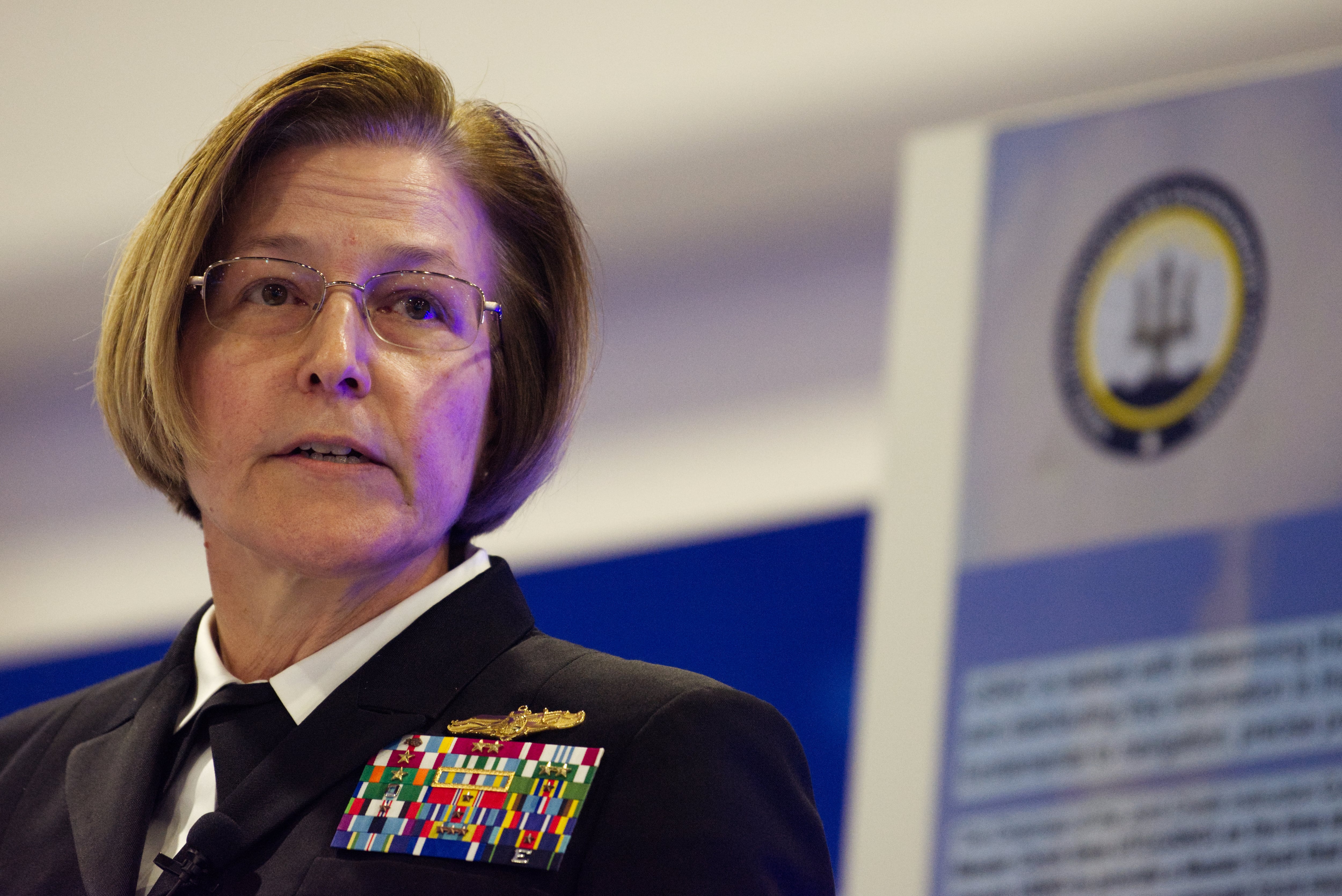NATIONAL HARBOR, MD. — Demand for information warfare capabilities is growing and will stake a larger presence among the undersea community in the near future, according to one U.S. Navy commander.
“I can’t say it enough. We are in demand, more in demand than we’ve ever been, and that will continue to increase,” Vice Adm. Kelly Aeschbach, leader of Naval Information Forces, said at the Sea-Air-Space conference going on this week in Maryland, just outside the nation’s capital. “My sense is, in the partnership we’ve had, we will have a persistent and growing presence within submarine crews over the coming years.”
The service in 2022 embedded information warfare specialists aboard subs to examine how their expertise aids underwater operations. A follow-up effort is now on the books, with information professional officers and cryptologic technicians joining two East Coast-based subs: the Delaware and the California.
The trials have so far proven fruitful, according to Aeschbach, who is colloquially known as “IBoss.” That said, staffing and other resources need considering before any sweeping moves are made.
“It’ll be a slow evolution, I think, as we build out that capacity,” Aeschbach said. “Part of that’s just the reality, as we’ve talked about today, of some of the choices we have to make about investment.”
RELATED

The Navy is also introducing information warfare systems into its live, virtual and constructive environments. The first few, focused on cryptology, meteorology and oceanography, will be uploaded in the fourth quarter of fiscal 2025, service officials have said. Other disciplines include communications, cryptology and electronic warfare, or the ability to use the electromagnetic spectrum to sense, defend and share data.
Tenets of information warfare — situational awareness, assured command-and-control, and the melding of intel and firepower — have enabled U.S. forces to swat down overhead threats in the Red Sea and Gulf of Aden. They have also assisted retaliatory strikes across the Greater Middle East.
Aeschbach cited as an example the USS Carney’s performance. The guided-missile destroyer and its crew spent the past six months intercepting attack drones and missiles launched by Iran-backed Houthi rebels in Yemen.
“Carney had the means to put the right weapon on the target through kinetic means,” Aeschbach said. “She also had the ability to defend herself. And, in all of that, the only part that I tell people is not information warfare is the operator pressing the button to release the missile.”
Colin Demarest was a reporter at C4ISRNET, where he covered military networks, cyber and IT. Colin had previously covered the Department of Energy and its National Nuclear Security Administration — namely Cold War cleanup and nuclear weapons development — for a daily newspaper in South Carolina. Colin is also an award-winning photographer.








